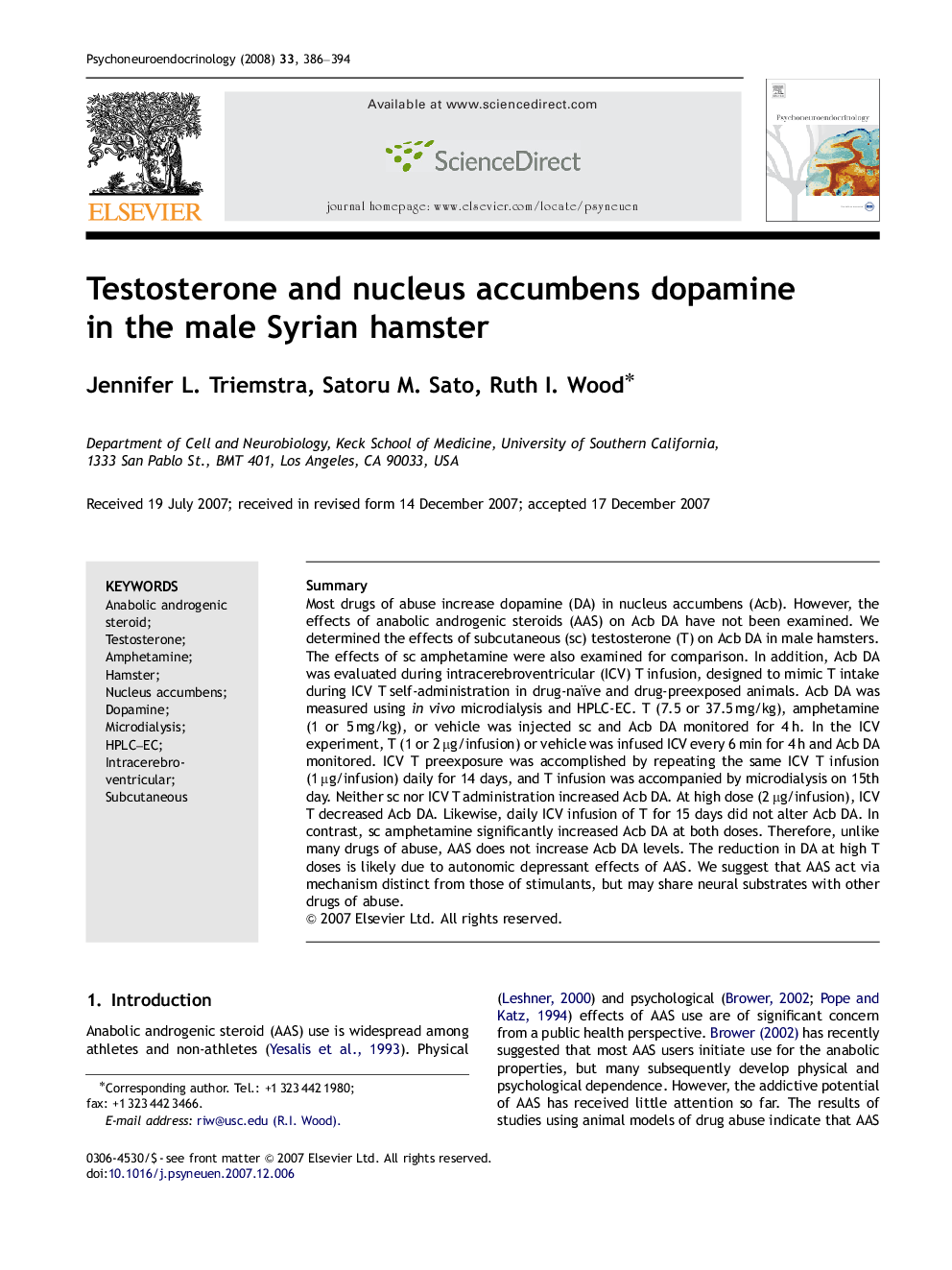| Article ID | Journal | Published Year | Pages | File Type |
|---|---|---|---|---|
| 336833 | Psychoneuroendocrinology | 2008 | 9 Pages |
SummaryMost drugs of abuse increase dopamine (DA) in nucleus accumbens (Acb). However, the effects of anabolic androgenic steroids (AAS) on Acb DA have not been examined. We determined the effects of subcutaneous (sc) testosterone (T) on Acb DA in male hamsters. The effects of sc amphetamine were also examined for comparison. In addition, Acb DA was evaluated during intracerebroventricular (ICV) T infusion, designed to mimic T intake during ICV T self-administration in drug-naïve and drug-preexposed animals. Acb DA was measured using in vivo microdialysis and HPLC-EC. T (7.5 or 37.5 mg/kg), amphetamine (1 or 5 mg/kg), or vehicle was injected sc and Acb DA monitored for 4 h. In the ICV experiment, T (1 or 2 μg/infusion) or vehicle was infused ICV every 6 min for 4 h and Acb DA monitored. ICV T preexposure was accomplished by repeating the same ICV T infusion (1 μg/infusion) daily for 14 days, and T infusion was accompanied by microdialysis on 15th day. Neither sc nor ICV T administration increased Acb DA. At high dose (2 μg/infusion), ICV T decreased Acb DA. Likewise, daily ICV infusion of T for 15 days did not alter Acb DA. In contrast, sc amphetamine significantly increased Acb DA at both doses. Therefore, unlike many drugs of abuse, AAS does not increase Acb DA levels. The reduction in DA at high T doses is likely due to autonomic depressant effects of AAS. We suggest that AAS act via mechanism distinct from those of stimulants, but may share neural substrates with other drugs of abuse.
